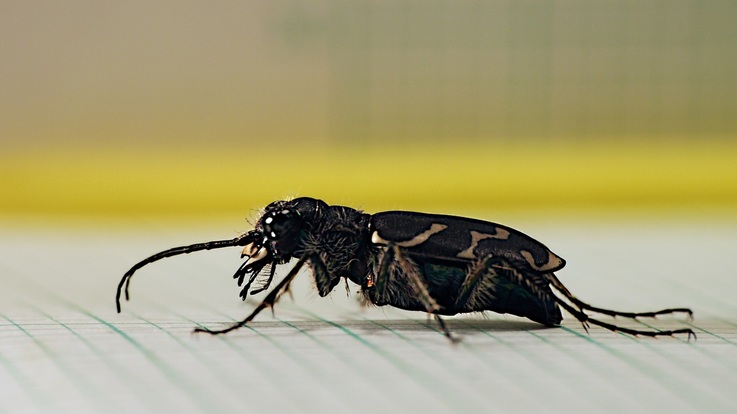Cornell Chronicle posted a nice video summary of our tiger beetle obstacle negotiation story, along with an interview with Cole Gilbert. Check it out here.
|
Ed Yong of National Geographic (and Not Exactly Rocket Science) interviewed me last week and just posted a great summary about our obstacle-sensing antenna story. You can find it here.
 Tiger beetles are predatory insects with acute eyesight, which run so fast that they can be blinded by motion blur. They are able to catch up to fleeing prey despite having to stop and re-orient themselves multiple times during the chase. While this works fine in an open lab setting, the question came of obstacle negotiation in the field came up. How do tiger beetles avoid running headlong into path obstructions during their blind sprints? The answer lies in their antennae, which they position so that their tips stay very close to the ground. Unlike many nocturnal animals, which wave their feelers around for wide-field search, tiger beetles keep them rigidly in front. Their flexible tips reliably make contact with pebbles, sticks, and other surface features, and enable the beetle to adjust its body angle before "face planting". This makes it possible to detect and negotiate obstacles at high speed without even seeing them. This study can be found in Proceedings of the Royal Society B: Biological Sciences, 281 (1779). |
 RSS Feed
RSS Feed
